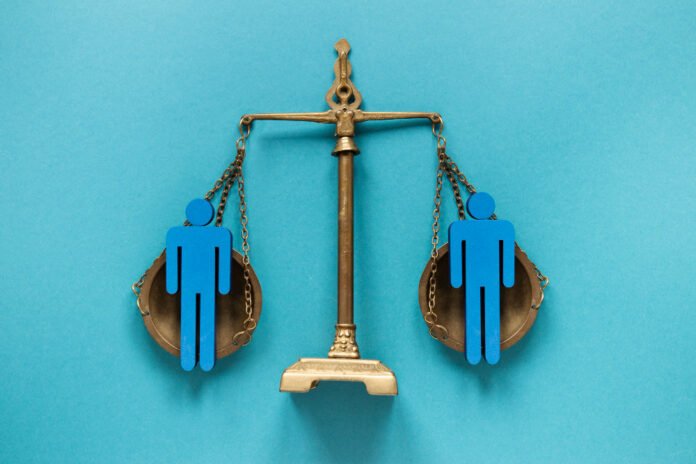Introduction:
As the digital landscape continues to evolve, websites like iofbodies.com ethics raise important ethical concerns regarding data privacy, human dignity, and digital responsibility. While the internet offers unprecedented access to information and content, it also challenges our traditional understanding of morality, especially when it involves sensitive or controversial subject matter. The ethical implications of such platforms go far beyond simple legality — they touch on core human values, respect for individuals, and the societal responsibility that comes with online publishing. In this article, we explore the key ethical concerns surrounding iofbodies.com, questioning its purpose, impact, and accountability within a broader social and digital framework.
1. The Ethics of Content Curation and Display
One of the most pressing concerns related to iofbodies.com is how it curates and displays content. When a platform includes sensitive materials — potentially involving human bodies, private data, or controversial themes — the way that content is presented becomes a moral issue. Ethical content curation demands a standard of respect, accuracy, and sensitivity. If the website includes any images or information related to real individuals, especially without consent, it may violate principles of human dignity and autonomy. Even in cases where content is sourced legally or shared by users, ethical curation should involve moderation, contextual disclaimers, and a clearly communicated intent behind the material being displayed. The failure to do so not only damages the site’s credibility but also contributes to a digital culture where shock value is prioritized over responsible sharing.
2. Consent and Privacy: Non-Negotiable Ethical Pillars
In the digital era, consent and privacy are foundational principles that must be upheld by any platform operating online. If iofbodies.com includes material involving individuals — whether it be medical imagery, personal data, or identifiable features — obtaining informed consent from those subjects is non-negotiable. The unethical use of content without permission infringes upon basic human rights and may lead to emotional, reputational, or even legal harm. Moreover, with the increasing sophistication of data scraping and surveillance, users must be assured that their presence and data on the internet are not being exploited for viewership or profit without their awareness. A site that neglects these responsibilities risks becoming a digital violator rather than a digital innovator.
3. Accountability and Transparency of Ownership
Ethical digital practice demands transparency in terms of who owns and operates a platform. Anonymous or ambiguous ownership, as may be the case with iofbodies.com, raises questions about the intent behind the site and the mechanisms for accountability. Without a clear person or organization to hold responsible, it becomes almost impossible for harmed parties to seek recourse or for users to trust the platform. Transparency builds credibility. Ethical platforms openly share who is behind the scenes, what their mission is, and how they respond to public feedback. A lack of transparency may suggest a deliberate evasion of responsibility, which is ethically indefensible in a time when digital trust is paramount.
4. The Psychological and Societal Impact of Exposure
The content available on platforms like iofbodies.com doesn’t exist in a vacuum — it can profoundly affect viewers, especially if it includes graphic or emotionally triggering material. Ethical considerations must include the mental health of audiences. Exposure to disturbing visuals or unethical representations can lead to desensitization, trauma, or misinformation. Moreover, the normalization of such content has broader societal consequences, influencing how people perceive sensitive subjects and human life itself. Sites that fail to place ethical boundaries on what is shared may unintentionally (or deliberately) foster a culture of disrespect, voyeurism, or dehumanization, undermining social empathy and shared values.
5. The Role of Ethical Design and User Warnings
A truly iofbodies.com ethics digital platform incorporates design features that protect users. This includes age restrictions, content warnings, easy-to-access privacy settings, and reporting systems for unethical or harmful material. If iofbodies.com lacks these features, it reflects a disregard for user agency and safety. Ethical design is not just about aesthetics or usability; it is about anticipating harm and taking preemptive action to prevent it. Whether a visitor is a researcher, a casual browser, or an unsuspecting individual who stumbles upon sensitive content, the platform has a duty to offer tools and transparency that allow users to make informed choices. Without these, the website becomes an unsafe space, especially for vulnerable or underage users.
6. Legal Compliance vs. Ethical Responsibility
It is important to differentiate between legality and ethics. A website may technically comply with existing laws while still operating in a morally questionable manner. For example, iofbodies.com might argue that its content is legal under public domain or fair use, but that does not absolve it from ethical scrutiny. True ethical responsibility goes beyond avoiding criminal behavior — it involves acting in good faith, considering the wellbeing of all stakeholders, and operating with integrity even when the law is silent. Ethical platforms lead by example, setting higher standards than the bare minimum required, and striving to earn community trust through principled action.
Conclusion: Rethinking Digital Ethics in a Borderless World
The ethical issues surrounding iofbodies.com are emblematic of a larger crisis in digital culture — a space where anonymity, accessibility, and virality often override accountability and compassion. As digital citizens, we must demand more from the platforms we interact with. This means scrutinizing not only what content is shared but how, why, and with whose consent. Websites like iofbodies.com must be held to ethical standards that reflect our collective values and prioritize human dignity. Only by embedding ethics into every layer of digital creation can we ensure that the internet remains a space of knowledge, respect, and shared responsibility.


